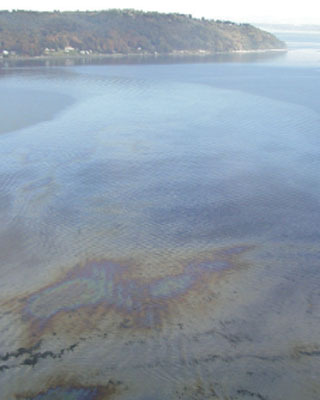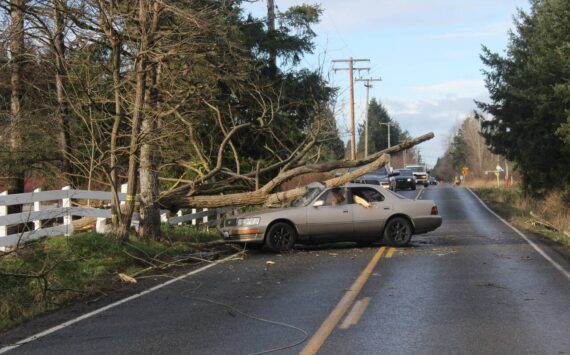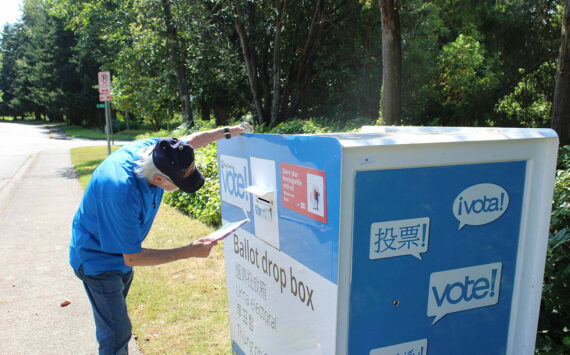Polar Tankers Inc., a subsidiary of ConocoPhillips Co., has agreed to pay $588,000 to help compensate the public for environmental harm caused by the October 2004 crude oil spill into Puget Sound’s Dalco Passage near Tacoma, according to Washington State’s Dept. of Ecology.
The payment would come under a proposed settlement agreement or consent decree filed this week in U.S. District Court, Western Washington Division involving Polar Tankers and the United States, state of Washington, Muckleshoot Indian Tribe and Puyallup Tribe of Indians. A consent decree in federal court makes no finding of guilt or innocence.
The U.S. Attorney General’s action was made at the request of the National Oceanic and Atmospheric Administration and the U.S. Fish & Wildlife Service; the Washington state departments of Ecology and Fish & Wildlife; and the Muckleshoot and Puyallup tribal governments.
The coalition of federal, state and tribal governments also filed a related restoration plan and environmental assessment that identifies three potential environmental restoration projects on Vashon and Maury Islands.
The spill caused harm to Puget Sound Chinook salmon and other salmon species, forage fish, shellfish and their habitats, as well as other bird and wildlife species.
The federal and state agencies and tribal governments seek public comment on the proposed $588,000 consent decree and the recommended restoration plan and environmental assessment through April 22. Information, including the full text of the consent decree and the restoration plan are available at http://www.darrp.noaa.gov/about/index.html .
Send comments to NOAA, Attention: Jason Lehto ( jason.a.lehto@noaa.gov ), 7600 Sand Point Way N.E., Seattle, WA 98115, (206) 526-6665.
OILY SHEEN STRETCHES TO TACOMA NARROWS
The 2004 incident involved the company’s oil tanker Polar Texas, which spilled between 1,000 and 7,200 gallons of crude oil during evening hours. The spill went unreported to state and federal authorities. Oil from the tanker spread out on the water throughout the night.
Patches of oily sheen reached as far south as the Tacoma Narrows and as far north as Eagle Harbor. The sheen touched 15 miles of shore along Colvos Passage, the Narrows and Quartermaster Harbor. Six miles of beach on southern Vashon and Maury islands required cleanup to remove the oil.
“The settlement agreement and the restoration projects being proposed are the final chapter for this tragic spill that damaged Puget Sound and had so many economic, environmental, cultural and emotional ramifications,” said Dept. of Ecology Spills Program Manager Dale Jensen.
“This is another example of how we are continually working to restore habitat impacted by spills. The settlement funds recovered in this case will be used to benefit habitat that was damaged through exposure to oil.” said David Kennedy, acting assistant administrator for NOAA’s National Ocean Service.
$2.2 MILLION CLEANUP
In October 2006 ConocoPhillips paid Ecology a $540,000 fine for the spill — the largest penalty the department ever issued for an oil spill from a vessel to Washington marine waters. Preventing oil spills to state waters, especially Puget Sound is among the Dept. of Ecology’s highest priorities.
The cleanup exceeded $2.2 million in costs, paid from a federal oil-spill contingency fund. Ecology and other state agencies spent $483,000, which was reimbursed by the federal fund. The U.S. Department of Justice recovered all cleanup costs from Polar Tankers.
Since the 2004 incident, Jensen said that Polar Tankers has “vastly improved” its operations. He noted in July 2009, the Dept. of Ecology gave Polar Tankers the department’s Exceptional Compliance Program Award for achieving excellence in marine safety and environmental stewardship.
THREE PROPOSED RESTORATION PROJECTS
Key features of the three proposed environmental restoration projects outlined in the consent decree and the restoration plan and environmental assessment include:
— Dockton shoreline restoration / This proposed project would re-establish a salt marsh at Dockton County Park by re-grading the shoreline and removing 350 feet of bulkheads to help restore the natural shoreline. The proposal also includes removal of boat houses, creosote pilings and other debris in the intertidal zone. The project would benefit salmon, forage fish, birds, and shellfish and offer new recreational opportunities and public access to the Sound;
— Vashon riparian habitat restoration / This proposed project would help recover and restore near-shore vegetation at various shoreline locations within and adjacent to the Maury Island Aquatic Reserve. The project would benefit juvenile salmon and spawning bait fish species. In addition, there are 10 sites where invasive plants — including Scotch broom, cat’s ear, tansy ragwort, blackberry and pampas grass — have crowded out native species. Landowners have agreed to replace these plants with native vegetation;
— Piner Point restoration / A previous Washington State Recreation and Conservation Office Salmon Recovery Funding Board grant, has protected more than 1,500 feet of environmentally-valuable shoreline in the Piner Point Natural Area on Maury Island. Consent decree funds would remove 225 feet of wooden creosote-treated bulkhead at the northern tip of Piner Point and replace it with natural vegetation. This proposed project would help ensure that the shoreline sediments are naturally replenished, providing critical habitat for a wide range of critical fish and wildlife species. Piner Point was in the area most directly affected by the Polar Texas oil spill.
The proposed projects would be undertaken under a partnership agreement with King County.
For more information, visit http://www.ecy.wa.gov/programs/spills/incidents/dalco/dalcobase.htm .





